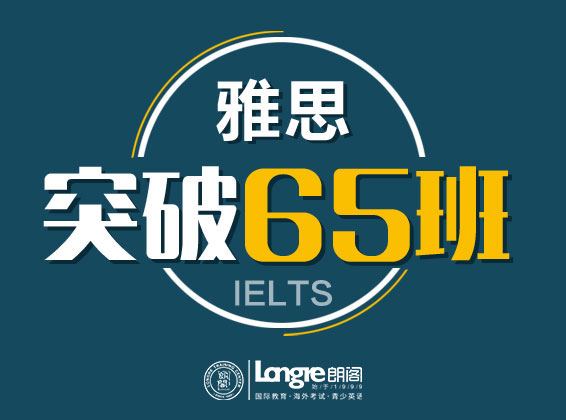|
P1 事例学习法 P2 英国社会居住形态 P3 人性与专业教育的平衡 朗阁雅思教师詹旭点评 1. 本次考试整体偏难。 2. 整体分析:涉及教育类(P1)社会类(P2)和教育类(P3) 3. 主要题型: 与2月首场考试截然不同的是本次16日阅读考试中乱序匹配题呈大比重回归趋势。本次雅思阅读考试中Matching匹配题共出现2组,分别为P1中段落细节配对和P3中半句配对,总计共9道左右,占据总题量的几乎四分之一。与此同时,乱序Heading标题配对仍以经典搭配组合出现在P2中。此外,就顺序类题型来看,本考次依然延续今年考试的重点—填空类和判断题皆出现两组,其中值得注意的是P1中填空类仍旧考察了上场考试中重复出现的Summary,而选择题仅在P3中考察了一组单选(4道)。 P1 事例学习法 文章主旨:对rats和birds动物习性研究来阐释范例学习理论 Matching 段落细节配对4 + 判断4 + Summary 5 参考答案:仅供参考 (判断部分有变动) 配对 1-4 1. D 2. A 3. C 4. E 判断 5. FALSE 6. TRUE 7. TRUE 8. FALSE 填空 9. less 10. social 11. watched 12. observer 13. Nutcracker 文章:供参考 Learning By Examples Learning theory is rooted in the work of Ivan Pavlov, the famous scientist who discovered and documented the principles governing how animals (humans included) learn in the 1900s. Two basic kinds of learning or conditioning occur, one of which is famously known as the classical condition. Classical conditioning happens when an animal learns to associate a neutral stimulus(signal) with a stimulus that has intrinsic meaning based on how closely in time the two stimuli are presented. The classic example of classical conditioning is a dog’s ability to associate the sound of a bell (something that originally has no meaning to the dog) with the presentation of food (something that has a lot of meaning for the dog) a few moments later. Dogs are able to learn the association between bell and food, and will salivate immediately after hearing the bell once this connection has been made. Years of learning research have led to the creation of a highly precise learning theory that can be used to understand and predict how and under what circumstances most any animal will learn, including human beings, and eventually help people figure out how to change their behaviors. Role models are a popular notion for guiding child development, but in recent years very interesting research has been done on learning by example in other animals. If the subject of animal learning is taught very much in terms of classical or operant conditioning, it places too much emphasis on how we allow animals to learn and not enough on how they are equipped to learn. To teach a course of mine I have been dipping profitably into a very interesting and accessible compilation of papers on social learning in mammals, including chimps and human children, edked by Heyes and Galef. The research reported in one paper started with a school field trip to Israel to a pine forest where many pine cones were discovered, stripped to the central core. So the investigation started with no weighty theoretical intent, but was directed at finding out what was eating the nutritious pine seeds and how they managed to get them out of the cones. The culprit proved to be the versatile and athletic black rat (Rattus rattus) and the technique was to bite each cone scale off at its base, in sequence from base to tip following the spiral growth pattern of the cone. Urban black rats were found to lack the skill and were unable to learn it even if housed with experiences cone strippers. However, infants of urban mothers cross fostered to stripper mothers acquired the skill, whereas infants of stripper mothers fostered by an urban mother could not. Clearly the skill had to be learned from the mother. Further elegant experiments showed that naive adults could develop the skill if they were provided with cones from which the first complete spiral of scales had been removed, rather like our new photocopier which you can word out how to use once someone has shown you how to switch it on. In case of rats, the youngsters take cones away from the mother when she is still feeding on them, allowing them to acquire the complete stripping skill. A good example of adaptive bearing we might conclude, but let’s see the economies. This was determined by measuring oxygen uptake of a rat stripping a cone in a metabolic chamber to calculate energetic cost and comparing it with the benefit of the pine seeds measured by calorimeter. The cost proved to be less than 10% of the energetic value of the cone. An acceptable profit margin. A paper in 1996 Animal Behavior by Bednekoff and Balda provides a different view of the adaptiveness of social learning. It concerns the seed catching behavior of Clark’s nutcracker (Nucifraga Columbiana) and the Mexican jay(Aphelocoma ultramarine). The former is a specialist, catching 30,000 or so seeds in scattered locations that it will recover over the months of winter, the Mexican jay will also cache food but is much less dependent upon this than the nutcracker. The two species also differ in their social structure, the nutcracker being rather solitary while the jay forages in social groups. The experiment is to discover not just whether a bird can remember where it hid a seed but also if it can remember where it saw another bird hide a seed.The design is slightly comical with a cacher bird wandering about a room with lots of holes in the floor hiding food in some of the holes, while watched by an observer bird perched in a cage. Two days later cachers and observers are tested for their discovery rate against an estimated random performance. In the role of cacher, not only nutcracker but also the less specialized jay performed above chance; more surprisingly, however, jay observers were as successful as jay cachers whereas nutcracker observers did no better than chance. It seems that, whereas the nutcracker is highly adapted at remembering where it hid its own seeds, the social living Mexican jay is more adept at remembering, and so exploiting, the caches of others. P2 英国居住形态 文章主旨: 介绍英国社会各种各样的居住模式 Heading段落标题配对题7 + 填空6 原文及答案待补充 P3 人性与专业教育的平衡 文章主旨: 人性道德教育与专业知识教育如何在失衡中找寻结合点 判断 5 + 单选 4 + Matching句子配对 5 原文及答案待补充 考试预测 1. 本场考试总体较难,文章选材涉及社会文化及教育类,考生可在备考时关注相应高频主题词。 2. 此次考试中,雅思阅读出现了旧题重现,首篇阅读文章P1为20110915旧题。考生可依据此特点借助阅读机经回顾练习以往经典旧题来复习巩固对应阅读解题技巧,并注意积累相关的重点高频词汇和分析文章长难句式帮助理解。 3. 从题型方面看,本次雅思阅读考试中共出现两次Matching配对题且以每篇5题左右的题量分布在首尾两篇文章中。结合近期考试情况来看,乱序匹配题的重要性开始出现回归趋势,针对此考生应加强此类题型的训练和技巧总结,熟悉划分句子成分,提升阅读效率。就传统主流题型来看,判断和经典填空类尤其Summary在本次考试中依然为高频热点,需要考生对基础拿分题给予一定重视。此外,值得注意的是本次阅读第三篇文章篇幅冗长且出现过多术语生词艰涩难懂,无疑加重考生任务量和心理负担。针对此,建议考生平时刷题训练时设置时间限制,保持一定的紧张感,并多扩充词汇量及加强分析理解长难句练习。 4. 下场考试注意选择中多选及人名理论配对题的回归,话题可能有关科技和商业、历史类话题。 5. 重点浏览11-16年机经。 (责任编辑:jasmine) |
文中图片素材来源网络,如有侵权请联系删除







